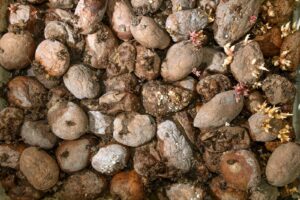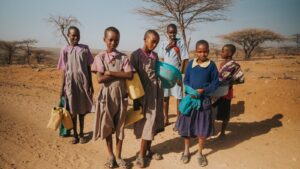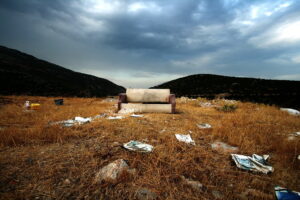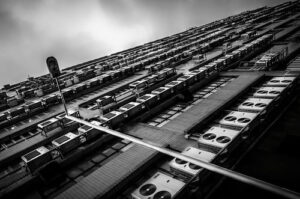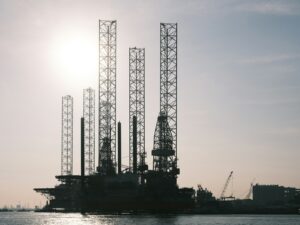How the pandemic helped animal welfare, public health and the climate crisis

It’s been a quarter century since Gavin Bruce first became involved in IAR [International Animal Rescue]. Trustee of the non-profit for a decade, over the past 15 years he’s been a full-time staff member, and today his job title speaks volumes as Chief Executive.
While still based in the UK, his work has taken him across the world. Early projects included tireless efforts to emancipate dancing bears in India, and captive breeds in Armenia. Soon turning attention to Indonesia, there he played a pivotal role freeing macaques from the illegal pet trade, establishing a rescue centre for the cute but wild primates, which would otherwise have been sold for profit, enduring horrific conditions at the hands of both the traders and new owners. Next, attention turned the plight of orangutans.
Different creatures, different places, nevertheless the approach to tackling these prevailing conservation challenges has been consistent throughout. As he puts it, IAR‘s emphasis is on making sure these animals never wind up in a sanctuary in the first place. A process that starts with community education and engagement, and has never been more important in the wake of the Covid-19 pandemic, and coronavirus’ stark reminder of the connections between animal welfare, infectious disease, and the climate crisis.
‘We’ve been working with the wildlife trade for many years, partly driven by the trade in slow lorises. If you went to a market, you’d see them, and many other endangered species being sold, usually to be kept in these little cages. Which is really grim to see. A lot of good work had been done pre-pandemic, using social media to educate potential buyers within a country that maybe it’s not such a good idea to buy these animals, which bite with a flesh-eating venom. There were a lot of online groups for slow lorises, and our team was responsible for getting dialogue started with communities, helping them understand these species don’t make great pets.
‘On the other side, we were building capacity within local authorities, because they didn’t really know which wildlife was considered endangered, and what was protected by law. There are lots of different species, so it’s quite a complicated business, and that’s before you consider tracking how poaching works, whether it was a commercial operation or more opportunistic,’ he continues. ‘To do that, you need to trace the whole supply chain, and this was really successful. Obviously, coming out the back of the pandemic, with animal trade the most likely cause, particularly in Southeast Asia, we saw this as a great chance to go back to the markets with a slightly different conversation.’
Rather than enforcement, Bruce explains, the emphasis has now been on public health risks to those who may be trading in endangered species, and their families. Taking advantage of Covid-19 being at the forefront of minds, not least in terms of socio-economic fallout, it’s all about reiterating the dangers of illegal trade and drawing lines between a world in lockdown, travel restrictions, job losses and shared trauma, and selling endangered animals for profit from overcrowded, unhygienic premises. The idea seems to be working.
‘When we first went back out there people were obviously used to our work with slow lorises, so many were immediately jumping to tell us — ‘we don’t have any slow lorises!’ So we needed to really make it clear this was about their health, and that of their children,’ says Bruce. ‘It really became a much more holistic discussion about how the health of people working in and around wildlife was at risk of having that wildlife kept in very confined conditions with cages stacked on top of each other, mixing different species. That’s the absolute breeding ground for viruses, and particularly mutating viruses. It’s well documented. By changing the conversation, it really started to change the attitudes of people working in the markets.
‘It’s been really interesting, people are much more open to dialogue than in the past, and we’re starting to see things like people getting animals vaccinated for rabies. That would never have happened before Covid-19. Sanitation levels are also rising, and welfare of animals, which was never a consideration before, at all, is really becoming important to these communities. Because they now know the risk to health, the desire to own wildlife is falling, too. Certainly within the domestic trade, we’re seeing a reduction at the markets. So using the grim side of the pandemic in a positive way is facilitating change.’
Bruce recalls how in the past ownership of wild animals was often less insidious than stereotypes suggest. In case of cuddly-looking, bush baby-like slow lorises, more often than not once they found an animal kept illegally and explained the situation to the owner, it would quickly become clear that ignorance was the root cause.
Now, by raising knowledge of environmental legislation and the relationship between illicit animal trade and a world pushed to the brink of collapse by deadly respiratory diseases, improvements are becoming more visible. And this isn’t the only example of how connecting dots is triggering positive steps, as is clear when we ask if communities acknowledge the long term economic harm associated with neglecting to care for the Earth.
‘In many areas we work, the environment is a harsh place to be farming. A lot is low lying coastal agriculture, very much at risk from sea level change and storm surges,’ Bruce tells us. ‘A really good example of how our conservation work is connecting dots can be found in mangroves, which have been destroyed through years of fishing and activities like that. We set up a programme along the coast working with communities to replant mangroves, so there are obvious environmental benefits to this. However, the biggest win for local people is that mangroves act as an incredible buffer. In some cases, farms where mangrove have been restored managed to save crops from saltwater flooding, while other farms, in other locations, lost everything.
’If a farmer loses everything, they will often be left with no alternative other than to get involved with something illicit and harmful, like the wildlife trade. There’s no other way for them to make a living. So just by replanting mangroves it creates an alternative livelihood,’ he continues. ‘Now we have people from the villages doing the work, collecting seeds, growing seedlings, planting groves. They’re protecting their farms. They’re recreating this incredible marine ecosystem and protecting the seagrass. It really is this fantastic connection between a community, nature, biodiversity and environment. For me, that really brings all those things together.’
Like wet markets and the risk of novel viruses evolving, promoting the restoration of ecosystems through clear evidence of how dangerous their destruction is to livelihoods reinforces a number of truths we often miss. Firstly, the highly interconnected nature of our planet, even across vast distances. We know actions in Southeast Asia, for example, have a direct impact on a trader in South East England. More so, it’s reassuring to see conservation projects which began 25 years ago have now produced the kind of results which show just how beneficial this type of work is to people, animals, and the planet. Four years into a pandemic which continues to unfold, albeit not at anything like the scale of 2020-21, this is surely cause to pause and consider our priorities.












